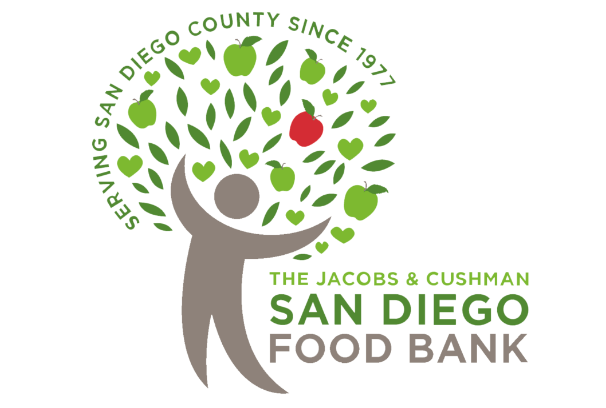Help the San Diego Food Bank
Help us Feed San Diegan's in Need.

We are Supporting the San Diego Food Bank by donating the first $1000 and hope to raise $7500 this year. Please Help us take care of those in Desperate need.
https://www.fooddriveonline.org/sandiegofoodbank/AltaVistaProperties
Hunger and Poverty in San Diego County
Of San Diego County’s 3.3 million residents*, over 1 million people face nutrition insecurity.** Of this number, 284,500 are children.** San Diegans facing nutrition insecurity are unable to provide three nutritious meals a day for themselves or their households. Currently, 2 in 5 children are nutrition insecure.** (*U.S. Census Bureau. 2020. **San Diego Hunger Coalition. 2021)
Serving San Diego County
The Jacobs & Cushman San Diego Food Bank and our North County Food Bank chapter feed approximately 400,000 people every month in partnership with 500 nonprofit community partners that operate feeding programs. Our nonprofit partners include food pantries, soup kitchens, shelters, low-income day care centers, senior centers, faith-based organizations, schools and day centers for the elderly and disabled. The Food Bank’s nonprofit partners collect food from our 90,000-square-foot warehouse in Miramar and our North County Food Bank warehouse in Vista. They then distribute the food directly to people in need in their local communities. By acting as a central distribution point, and through our own direct distributions, the Food Bank and our nonprofit partners provide food to communities throughout the county’s 4,300-square-mile radius. In the fiscal year 2021-2022, the Food Bank distributed 44 million pounds of food. Of that number, more than 13 million pounds or 31 percent was fresh produce.
CLICK HERE to view the San Diego Food Bank’s 2022 Hunger Fact Sheet.
San Diego’s Food Bank Population – Profiles, Analysis, and Solutions:
The Food Bank and Point Loma Nazarene University launched a groundbreaking, 30-page report with data and analysis from the first-ever, locally-conducted survey of the Food Bank’s client population living in communities throughout San Diego County that rely on the Food Bank’s services. The report provides information on average household income, household employment data, average household size, percentage of households with children, percentage of seniors seeking food assistance, a breakdown of the Food Bank’s client population by ethnicity, and answers the question why so many San Diegans rely on the Food Bank’s services.
Key findings from San Diego’s Food Bank Population – Profile, Analysis, and Solutions include:
- Families who use the Food Bank are larger than average. The average size of a Food Bank’s household is between 3 and 4 persons, including 1-2 children. This is about a person more than the region-wide average and that person is generally a child.
- Dependence on the Food Bank is evident across all ethnic groups. Caucasians account for 29% of Food Bank recipients; Asians represent 8%; African-Americans account for 3%; Native Americans represent another 2%; and over half, 55%, of the households receiving Food Bank assistance are Hispanic.
- 66%, more than two-thirds, of households receiving food assistance have members who work. 37% of households have one employed individual, whereas 29% have two or more people in the household working.
- Despite 66% of households having a wage earner, the reason most households give for needing help from the Food Bank is that they “cannot make ends meet.”
- Underemployment is a problem in the San Diego region. Nearly 80% of those surveyed would prefer full-time work if they could find it, but they are forced to work one or more part-time jobs because they cannot find full-time employment.
- Unemployment is a key force driving Food Bank demand with 34% of the households having no wage earners.
- Long-term unemployment, however, is a severe problem among the Food Bank population since about one-half of households have been out of work for more than two years.
- Among retirees, this reflects a split group. While most of them have retired by choice, 24% have been forced into early retirement and have not found new work.
- 46% of households have been receiving help from the Food Bank for less than 6 months which indicates that the Food Bank is playing its role as a short-term safety net for those needing temporary assistance until they get back on their feet.
- 19% have been consistently coming to the Food Bank for more than three years and 24% have relied on the Food Bank for one to three years.
- The report calls for a greater partnership between the Food Bank and the County Board of Supervisors since the Food Bank has direct contact with, and is a gateway to, nearly 350,000 people in need every month.
- The report’s authors recommend the establishment of a joint taskforce to examine hunger and poverty that would enhance outreach efforts for a range of county health and human services programs, and it would bring the nonprofit, private, and county human services together to further develop a unified approach to tackling the root causes of hunger and poverty. Without action, the report’s authors conclude, our region risks seeing a new generation engulfed by a self-perpetuating cycle of poverty, health problems, and dependency.
CLICK HERE to download a copy of the report.
How You Can Help
There are many ways you can help:
- Host a food drive at your school, business or faith-based organization.
- Host a Virtual Food Drive and donate from the ease of your computer or smartphone.
- Volunteer at the Food Bank’s Miramar or Vista facilities.
- Make a monetary donation. Every $1 donation provides 2 meals.









